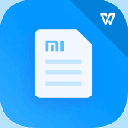








Best Arduino Projects

Descripción de Best Arduino Projects
Arduino is an open-source prototyping platform based on easy-to-use hardware and software. Arduino boards are able to read inputs - light on a sensor, a finger on a button, or a Twitter message - and turn it into an output - activating a motor, turning on an LED, publishing something online. You can tell your board what to do by sending a set of instructions to the microcontroller on the board. To do so you use the Arduino programming language (based on Wiring), and the Arduino Software (IDE), based on Processing.
That actually says it all.
You can find the complete introduction here.
Maybe a little more information about the board:
The Arduino Board itself is a blue circuit board, the size of a credit card (but they also have models in other sizes). It has two rows of connectors (the 'headers'), a power connector and a USB connector. The brain of the board is an Atmel microcontroller. It's like a really small, very low power 'computer'. (It only has 32KB of storage, 2KB of RAM, and the 8-bit processor runs at only 16MHz.) For most applications, however, this is more than enough. The pins of the processor connect to the headers, and you can connect them to virtually anything you can imagine. You just need to write some lines of code to control them. The I/O pins (Input/Output) can be used as input pins, to connect buttons or knobs, temperature sensors, light sensors, or even keyboards and mouses, digital musical instruments … or they can be used as output pins, to connect LEDs, drive motors, control the lights in your home, connect to small displays or even connect to the Internet, so that it can check your mail, post tweets ... Through the USB connection you can also use it to control your computer, or use your computer to control the Arduino.
As you can see, the sky's pretty much the limit !
Arduino is a popular open-source development board for engineers and makers to develop electronics projects in an easy way. It consists of both a physical programmable development board (based on AVR series of microcontrollers) and a piece of software or IDE which runs on your computer and used to write and upload the code to the microcontroller board.
Explore below some interesting arduino projects and tutorials based on different types of arduino baords like Arduino Uno, Arduino Pro Mini, etc. These DIY arduino projects for beginners are explained well and you can find the complete guide to DIY these projects with the help of circuit diagrams, source codes and videos. You can also browse below pages to get new arduino project ideas.
Arduino es una plataforma de creación de prototipos de código abierto basado en hardware y software fácil de usar. placas Arduino son capaces de leer las entradas - la luz en un sensor, un dedo sobre un botón, o un mensaje de Twitter - y convertirla en una salida - la activación de un motor, encender un LED, publicar algo en línea. Se puede decir que su tablero qué hacer mediante el envío de un conjunto de instrucciones al microcontrolador en el tablero. Para ello se utiliza el lenguaje de programación de Arduino (basado en el cableado), y el software de Arduino (IDE), basadas en el procesamiento.
Que realmente lo dice todo.
Puede encontrar la introducción completa aquí.
Tal vez un poco más de información sobre el tablero:
El propio Consejo de Arduino es una placa de circuito azul, del tamaño de una tarjeta de crédito (pero también tienen modelos en otros tamaños). Tiene dos filas de conectores (los encabezados ''), un conector de alimentación y un conector USB. El cerebro de la junta es un microcontrolador Atmel. Es como un muy pequeño de energía muy bajo 'ordenador',. (Sólo tiene 32 KB de almacenamiento, 2 KB de memoria RAM, y el procesador de 8 bits se ejecuta en solamente 16MHz.) Para la mayoría de aplicaciones, sin embargo, esto es más que suficiente. Las patillas del procesador se conectan a los colectores, y se puede conectar a prácticamente cualquier cosa que se pueda imaginar. Sólo tiene que escribir algunas líneas de código para controlarlos. Los pines de E / S (entrada / salida) se pueden utilizar como pines de entrada, para conectar botones o mandos, sensores de temperatura, sensores de luz, o incluso teclados y mouses, instrumentos musicales digitales ... o pueden ser utilizados como pines de salida, para conectar LED, motores de tracción, control de las luces de su casa, se conectan a pantallas pequeñas o incluso conectarse a Internet, para que pueda comprobar su correo, enviar los tweets ... a través de la conexión USB también se puede utilizar para controlar el ordenador, o utilizar el ordenador para controlar el Arduino.
Como se puede ver, el cielo es más o menos el límite!
Arduino es una placa de desarrollo de código abierto muy popular para los ingenieros y fabricantes para desarrollar proyectos de electrónica de una manera fácil. Consiste en un tablero tanto física programable desarrollo (basado en la serie de microcontroladores AVR) y una pieza de software o IDE que se ejecuta en el ordenador y se utiliza para escribir y subir el código a la placa de desarrollo.
Explorar más adelante algunos proyectos interesantes Arduino y tutoriales basados en diferentes tipos de baords Arduino como Arduino Uno, Arduino Pro Mini, etc. Estos proyectos Arduino DIY para los principiantes se explican bien y se puede encontrar la guía completa a DIY estos proyectos con la ayuda de circuito diagramas, códigos fuente y vídeos. También puede navegar por páginas a continuación para obtener nuevas ideas de proyectos Arduino.
Arduino is an open-source prototyping platform based on easy-to-use hardware and software. Arduino boards are able to read inputs - light on a sensor, a finger on a button, or a Twitter message - and turn it into an output - activating a motor, turning on an LED, publishing something online. You can tell your board what to do by sending a set of instructions to the microcontroller on the board. To do so you use the Arduino programming language (based on Wiring), and the Arduino Software (IDE), based on Processing.
That actually says it all.
You can find the complete introduction here.
Maybe a little more information about the board:
The Arduino Board itself is a blue circuit board, the size of a credit card (but they also have models in other sizes). It has two rows of connectors (the 'headers'), a power connector and a USB connector. The brain of the board is an Atmel microcontroller. It's like a really small, very low power 'computer'. (It only has 32KB of storage, 2KB of RAM, and the 8-bit processor runs at only 16MHz.) For most applications, however, this is more than enough. The pins of the processor connect to the headers, and you can connect them to virtually anything you can imagine. You just need to write some lines of code to control them. The I/O pins (Input/Output) can be used as input pins, to connect buttons or knobs, temperature sensors, light sensors, or even keyboards and mouses, digital musical instruments … or they can be used as output pins, to connect LEDs, drive motors, control the lights in your home, connect to small displays or even connect to the Internet, so that it can check your mail, post tweets ... Through the USB connection you can also use it to control your computer, or use your computer to control the Arduino.
As you can see, the sky's pretty much the limit !
Arduino is a popular open-source development board for engineers and makers to develop electronics projects in an easy way. It consists of both a physical programmable development board (based on AVR series of microcontrollers) and a piece of software or IDE which runs on your computer and used to write and upload the code to the microcontroller board.
Explore below some interesting arduino projects and tutorials based on different types of arduino baords like Arduino Uno, Arduino Pro Mini, etc. These DIY arduino projects for beginners are explained well and you can find the complete guide to DIY these projects with the help of circuit diagrams, source codes and videos. You can also browse below pages to get new arduino project ideas.


























